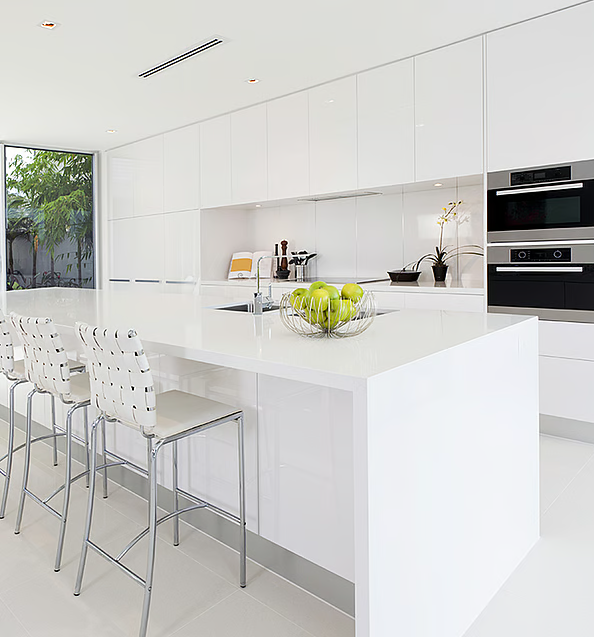Compositions and Transformations
Granite and marble are both stone types formed in nature but differ greatly in their geological developments and substance makeups. Granite originates as a molten magma that cools below ground, solidifying into a rock consisting predominantly of quartz, feldspar, and mica. These minerals lend granite its grainy texture and contribute to its famous resilience, measuring 6-7 on the Mohs hardness scale. Marble, alternatively, is a metamorphic rock that forms when limestone is subjected to substantial heat and pressure, resulting in a calcium carbonate or dolomite-rich material. This change imbues marble with its recognizable veined, more uniform appearance.
Durabilities and Maintenance Needs
Granite's robust composition makes it less vulnerable to scratching, chipping, and staining compared to marble. Countertops crafted from granite are most suitable for kitchen use due to strength and easy care; they can withstand high temperatures and resist common kitchen acids without etching. While also sturdy, marble is softer and more porous than granite, making it more prone to stains, scratches, and etching from acidic substances. This sensitivity necessitates more frequent sealing of marble surfaces to prevent harm.
Aesthetic Variations
The visual appeal of granite and marble differs distinctly. Granite offers a more diverse look, with a wide range of hues and patterns including speckles, swirls, and waves, largely owing to its multifarious mineral material. Marble is prized for its timeless elegance, showcasing softer tones and a classic veined motif that is often synonymous with luxury. The one-of-a-kind patterns in marble can be large and dramatic or subtle, contingent on the type and cut of the stone.

Cost Implications and Comparisons
Granite and marble are both considered premium stone options, though marble has a reputation of being particularly luxurious due to its rarity and inherent beauty. However, the cost can fluctuate extensively based on the stone's provenance and distinctive characteristics. For instance, Italian marble varieties such as lustrous Carrara and elegant Calacatta regularly command higher prices than most granite slabs. Installation expenses tend to be comparable for both materials as they primarily hinge on complexities inherent to the project.
Resistance to Heat and Other Qualities
Granite excels at withstanding heat, making it perfectly suited to kitchens where scorching pans and dishes may contact its smooth surface without causing harm. While marble also endures heat fairly well, direct exposure to very high temperatures can result in unsightly discoloration or small fractures if a protective buffer is not placed between the stone and the heated item.
Environmental Impacts and Indoor Air
Extracting either granite or marble inevitably damages the natural environment to some degree. Yet granite quarries tend to yield usable rock for longer periods, potentially designating it as a marginally more sustainable selection. With regards to indoor air quality, scientific research indicates that both stones emit no harmful gases when maintained properly through routine sealing and care.
Ultimately, choosing granite or marble depends chiefly on assessing your specific prerequisites concerning durability, maintenance demands, aesthetic appeal, and affordability. Consulting specialized resources that offer comprehensive granito vs marmol can furnish valuable information to weigh all factors thoroughly and arrive at the optimal decision aligned with your design aspirations. Both offer unique merits, confirming their enduring popularity for residential and commercial applications.